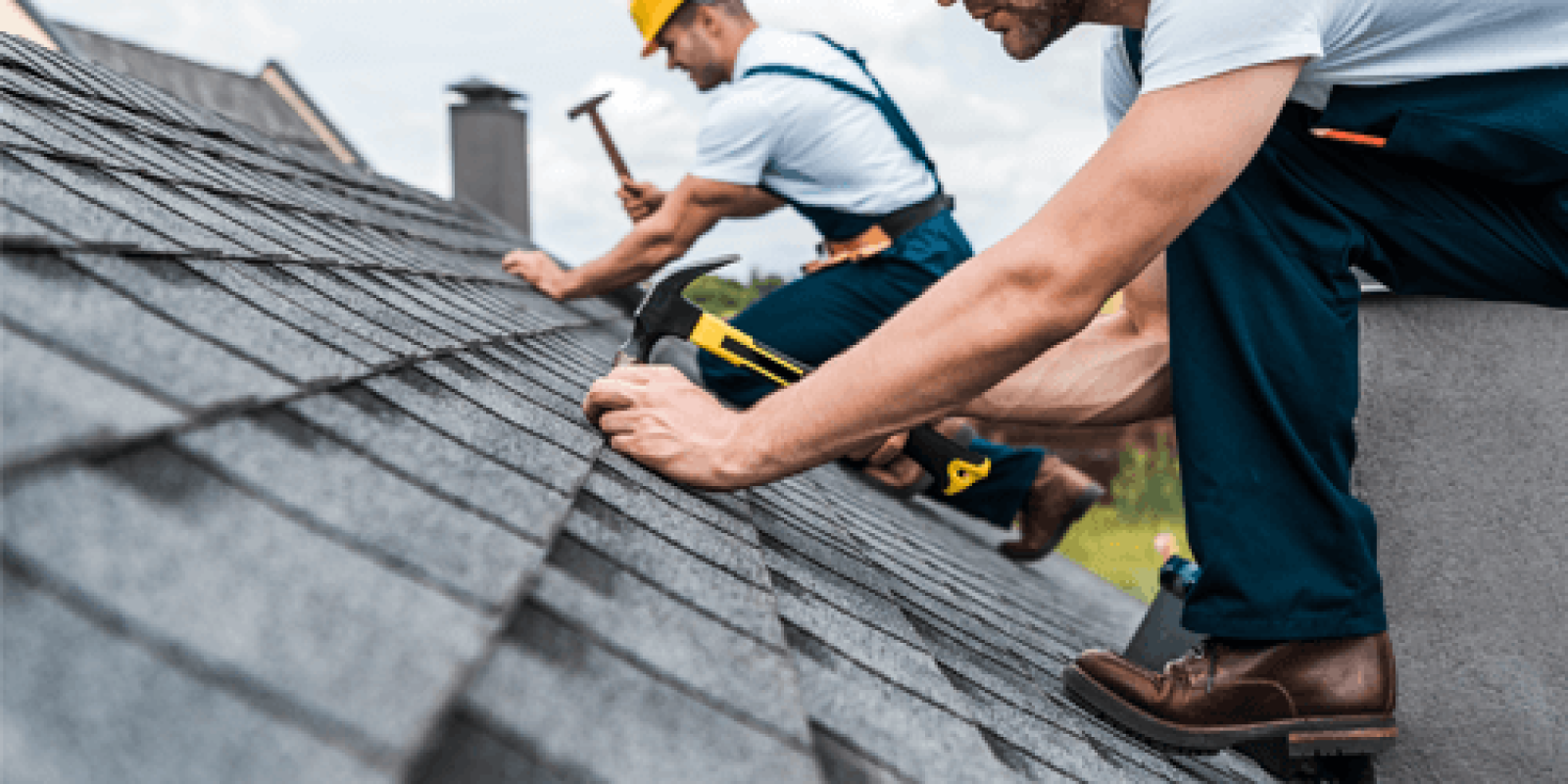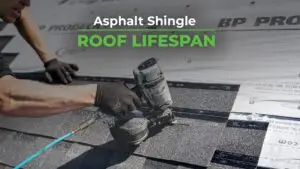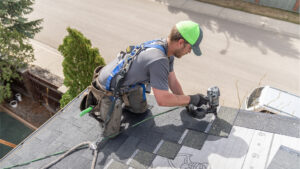No one can argue how important a roof is for your home.
It literally keeps the weather out and keeps you safe, but how do you know when it’s time to get a new roof? Our experts have seen enough to know the difference between a roof that can be repaired, and a roof that needs to be replaced.
It depends on what kind of roof you have, how old it is, what climate you’re in, and what issues you’re seeing. To figure out if you need a new roof, ask yourself the following questions.
What’s My Roof Made Of? And How Old Is It?
How long a roof lasts generally depends on what material it’s made of. This ranges from asphalt shingles, to rubber shingles, wood shakes, metal, and more.
When building a new house or replacing a roof, you can get high quality, mid-range, or lower quality roofing products.
Most people want the most cost-effective option. On the lower end, you can get asphalt shingles that are meant to last 20 to 25 years.
Keep in mind though, the price difference between lower quality and mid-range shingles might only be $200 in total. That means for an extra $200 you can upgrade to a standard 30-year asphalt shingle and get an extra five to ten years out of your roof. From our experience, 90% of people go with the standard 30-year option. We install a lot of Owens Corning Duration shingles and see excellent results from them.
On the higher end, your roof might be a 50-year product with a Class 4 rating. These shingles are usually hail-resistant, rated for higher wind speeds, and can even give you a break on your house insurance. Metal is also one of the longer-lasting roofing materials.
When it comes to the age of your current roof, people generally know what year their roof was installed. If you don’t know, you should take a look through old paperwork and see if you can find out for future reference. Knowing this will help guide any decisions you make.

25-year warranty
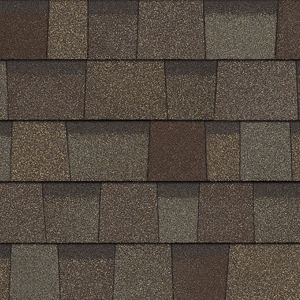
Limited lifetime warranty
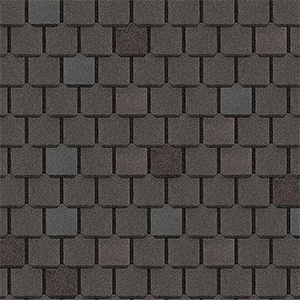
Limited lifetime warranty
Is The Climate Around Here Bad For My Roof?
Severe storms, humidity, and high winds can shorten the lifespan of your roof. Here in Lethbridge, the most common problem we see on roofs is wind damage (but you knew that already).
We also see damage from severe summer storms and frequent temperature changes. Think about it. In winter we often see the weather freeze, then thaw, then freeze, then thaw… all season long. This isn’t ideal for the integrity of your roof.
Look into your climate; if your area gets frequent storms, high humidity, or high winds, you might need to replace your roof sooner than expected.

Severe storms, humidity, and high winds can shorten the lifespan of your roof. Here in Lethbridge, the most common problem we see on roofs is wind damage (but you knew that already).

We also see damage from severe summer storms and frequent temperature changes. Think about it. In winter we often see the weather freeze, then thaw, then freeze, then thaw… all season long. This isn’t ideal for the integrity of your roof.

Look into your climate; if your area gets frequent storms, high humidity, or high winds, you might need to replace your roof sooner than expected.
What Exactly Is Wrong With My Roof?
To answer the question, “When should I get a new roof?” you can ask yourself all the questions above, but you also have to physically inspect your roof for problems.
If you’re up for doing this on your own, we’ve listed some common issues to look out for below that can be repaired; this way you won’t need to replace your entire roof before it’s necessary. If you’d rather have the opinion of a professional, we can come take a look.
These Issues Are Repairable
Let’s face it— re-roofing can be expensive. It’s worth taking a look for certain issues that can be repaired so you can get a few more years out of your current roof. Having said that, it’s important to fix these issues now so they don’t turn into larger problems later on.
Here’s what to look for:
| ▢ |
Missing shingles
When there’s a small number of shingles missing and the rest look intact, you can replace the missing ones (or have a professional do it).
| ▢ |
Leaks & freeze thaw areas
These areas can cause extra wear on your home, over and over. If you don’t get them looked after, the moisture can turn to mold or rot inside your home (a whole other issue). Thankfully, this is often repairable.
| ▢ |
Condensation in attic vents or around stacks
This leads to water damage inside your house which, again, can lead to long term water damage. Fix this now to prevent costly repairs in your home later on.
These Are Signs You Need A New Roof
Some people simply look around their neighbourhood and notice that a lot of houses are getting new roofs. While this is a good reminder to check on your home, there’s better reasons to re-roof than to keep up with the neighbours.
Here are the common signs our experts see that tell us it’s time to re-roof.
Loss of granules on shingles
Granules are part of what protects the home from hail and other damage; if they’re missing, your roof is significantly weakened. The first indication of granular loss is finding the granules coming out of downspouts on your driveway.
Curling shingles
When many shingles start curling, they can’t protect your house as well and are more susceptible to the elements. Your roof needs attention.
Missing pieces
Depending on how many pieces are missing and the state of the remaining shingles, this can be an indication that you need a new roof. This is especially important for wood shakes.
If you’ve decided to go ahead and replace that roof, remember it doesn’t matter if you get your roof redone in fall or spring, winter or summer— you must use the right products for your overall climate.
Sometimes we see that the cheaper shingles don’t last, no matter how well they were installed. Better quality products will always last longer, so you can relax for the next 30-odd years, knowing your roof is safe.
Check With A Professional
When our professional roofers advise homeowners to replace their roofs, it’s usually from a combination of water damage, wind damage, rain, and snow melt. If you’re unsure about your home, give us a call or send us a message and we’ll help you get the answers you need.
By Cole Townsend | December 16, 2020
